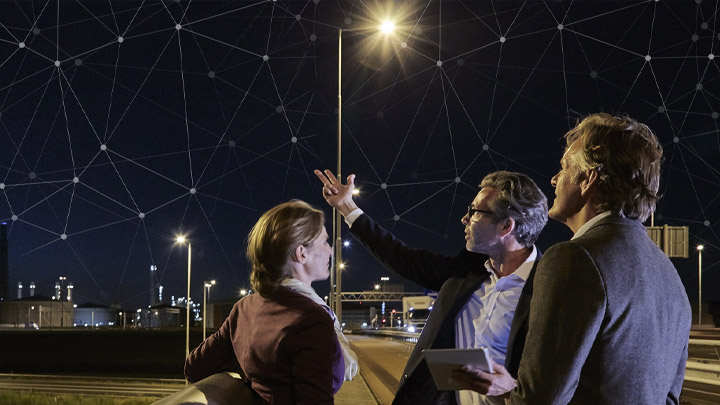With connected lighting rapidly becoming the linchpin for smart buildings, cities and the Internet of Things, many in the industry are asking: where’s the next opportunity? Look no further than human-centric lighting (HCL), a market estimated to reach $3.91 billion by 2024. With tunable white light now defined as part of the Sensor Ready (SR) standard, we’re at the tipping point for HCL to go mainstream.
What is human-centric lighting (HCL)?
Evidence is growing that light doesn’t just help us see – it impacts how we feel and behave. HCL aims to use the power of light to improve how we live and work. By tuning light to support our circadian rhythms and emotional needs, we can promote human comfort, wellbeing and performance. For example, a study found that when primary school students are exposed to (6000K-100fc average maintained) lighting, they performed 36% better at oral reading fluency, compared to 17% with control lighting. More research is underway to expand our understanding of such effects.
Why now?
HCL got off to a slow start, partly because adjusting lighting settings was difficult and expensive and partly because of a lack of standards. Two things changed. Control capability is now embedded into LED fixtures with protocols communicating directly to the driver. And the SR standard now includes a standardized protocol for tunable white light, allowing it to be controlled wirelessly.
This means the conditions are finally right for HCL to take off with a new generation of products and applications that allow building occupants, facility managers and installers to tune light for different tasks, settings or times of day. So right at the moment when science is proving that tailoring light can support human performance, it’s never been easier to change the ambience. And all of this can be automated.
What are the possibilities?
You’d be surprised how many different industries can benefit from tunable lighting. Let’s take a moment to think about the many applications now gathering momentum. Personalized hotel room lighting that helps guests adjust to a new time zone and overcome jetlag. Industrial light levels tuned to reduce fatigue and errors and the health impacts of shift work. Health and aged care facilities where lighting simulates daylight rhythms to help patients and residents sleep better, recover faster and feel happier. Schools where teachers can use lighting to calm students – or help them focus. Offices where workers can personalize light settings to suit their own vision, helping to create a more inclusive and comfortable workplace.
Some organizations are already testing HCL to see if they can get a competitive advantage. The Seattle Mariners professional baseball team installed locker room circadian lighting in 2013 to combat jet lag and to help synchronize player energy levels pre- and post-game. Companies like Czech Republic energy company innogy are upgrading their offices to LED lighting systems tuned to support the circadian rhythms of teams.
What’s the future?
All this interest in HCL points to a future where people simply expect tunable light in the places where they spend most of their time. For business and institutional spaces, in particular, tunable lighting will be specified at the outset and designed carefully to support organizational goals.
Adding new value to HCL scenarios is the ability to personalize lighting to suit different visual and task needs using a smartphone app connected to Sensor Ready lighting infrastructure. Now organizations can automate lighting to achieve human and energy outcomes, while still giving people more choice and flexibility. What could be more human-centric than that? It’s really the best of both worlds.
Are you ready to ride the wave?
Now that we have a well-understood and available standard, HCL opens a floodgate of opportunity for lighting manufacturers, developers and designers. At Signify we’re inspired by your ideas for new products and applications, and when our vision aligns we can work with you to open new markets. Are you ready to explore what’s possible?

Global Product Manager
Signify

How luminaires can work smarter for all
While it’s useful to match lighting to different personal preferences, it’s even more useful to understand how and what different settings can create.

Getting streetwise about outdoor lighting
Street lights come in a range of form factors from but despite all their differences, they have one thing in common: they can all be controlled wirelessly.

Lights down, savings up
Wasted energy is hugely expensive for homes, businesses, governments, and the planet. And yet the solution is remarkably simple.